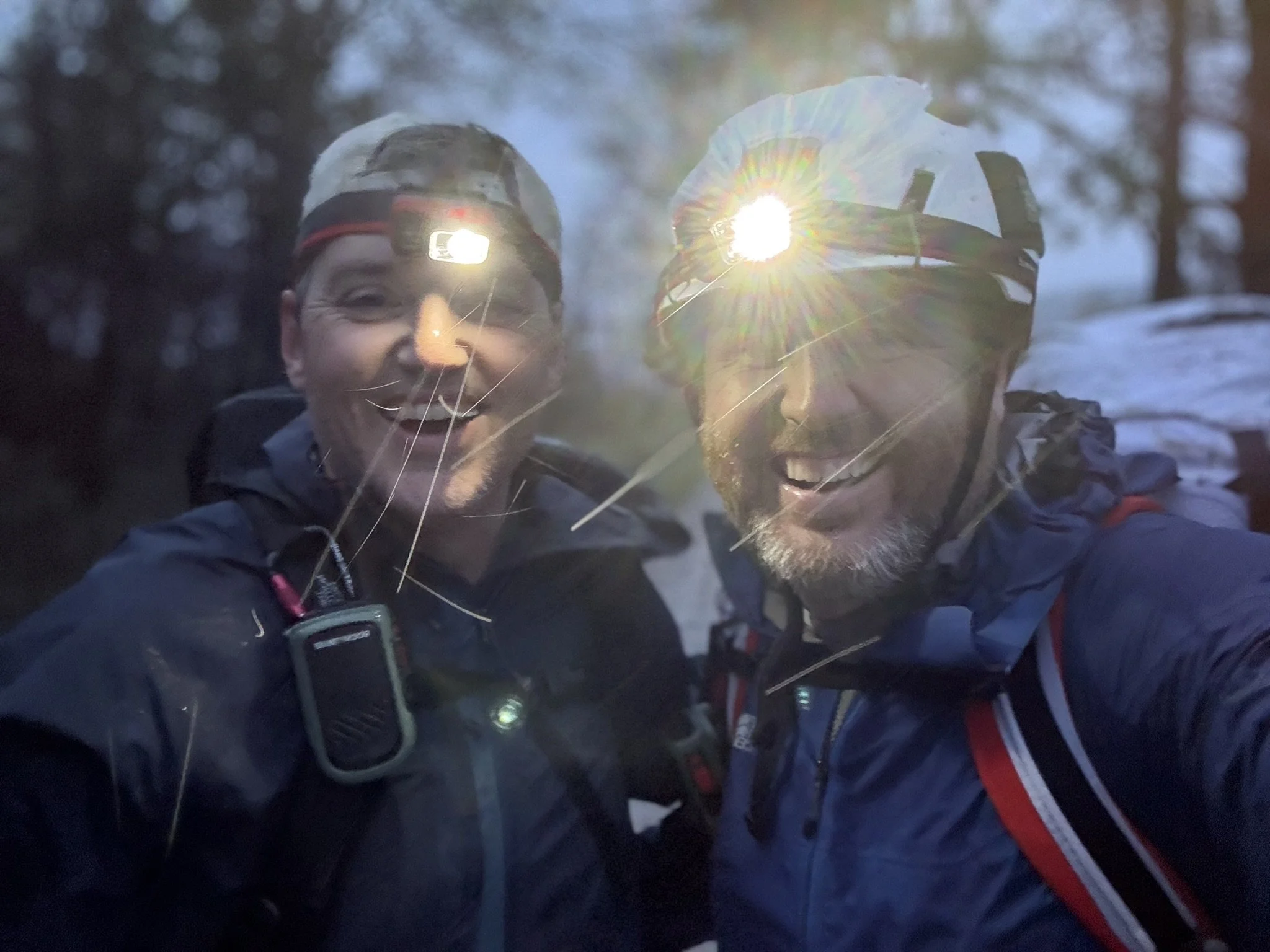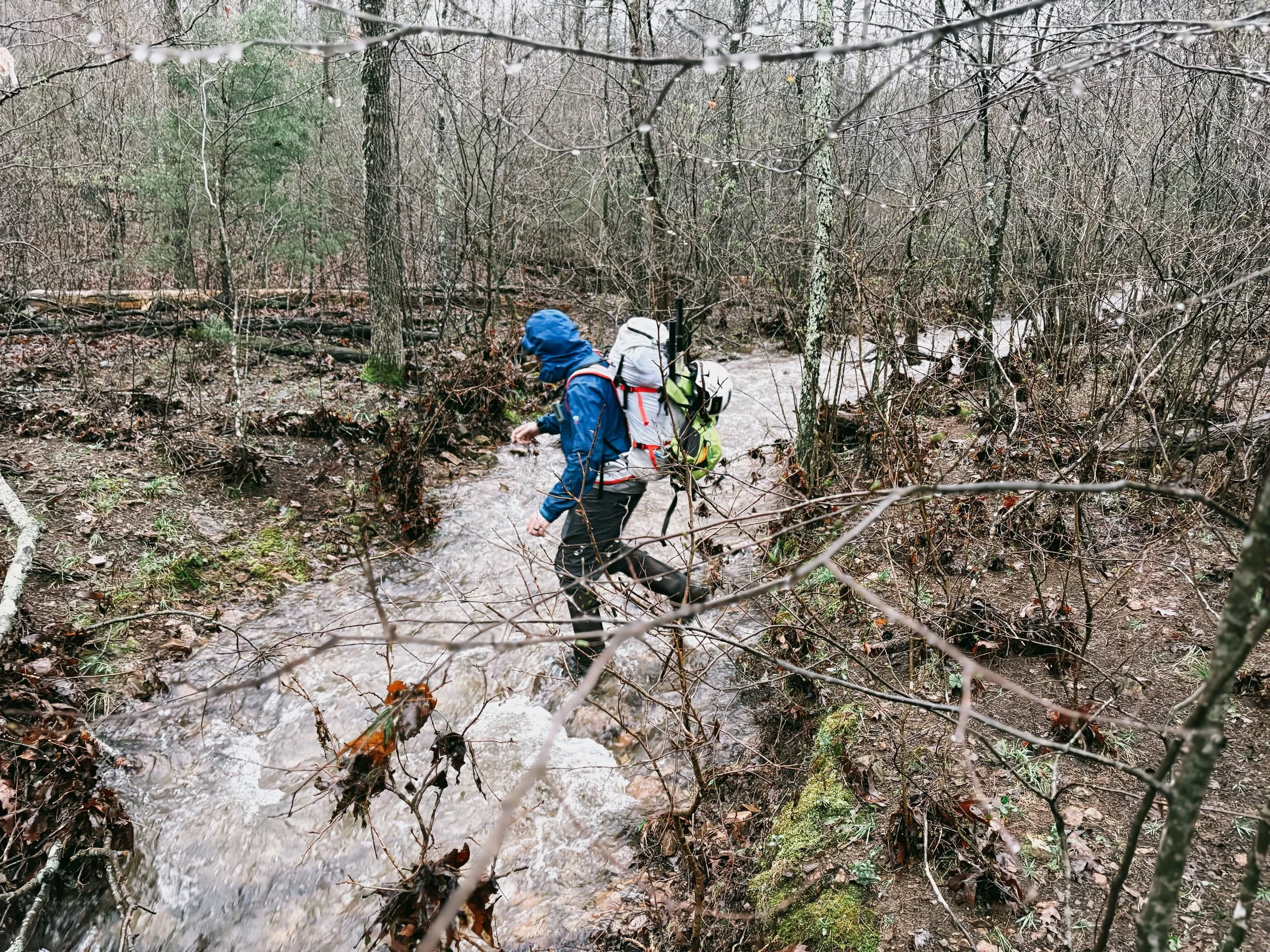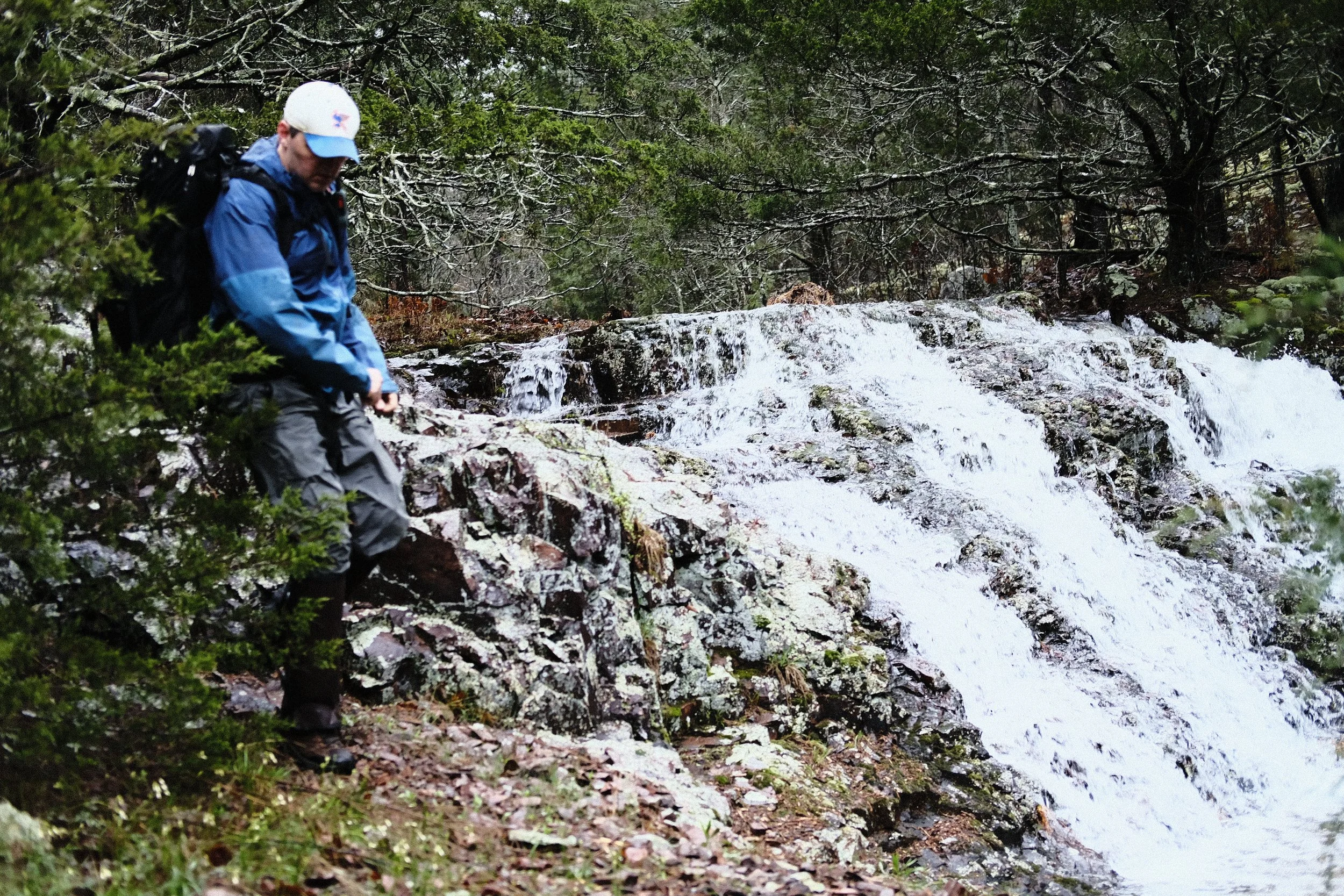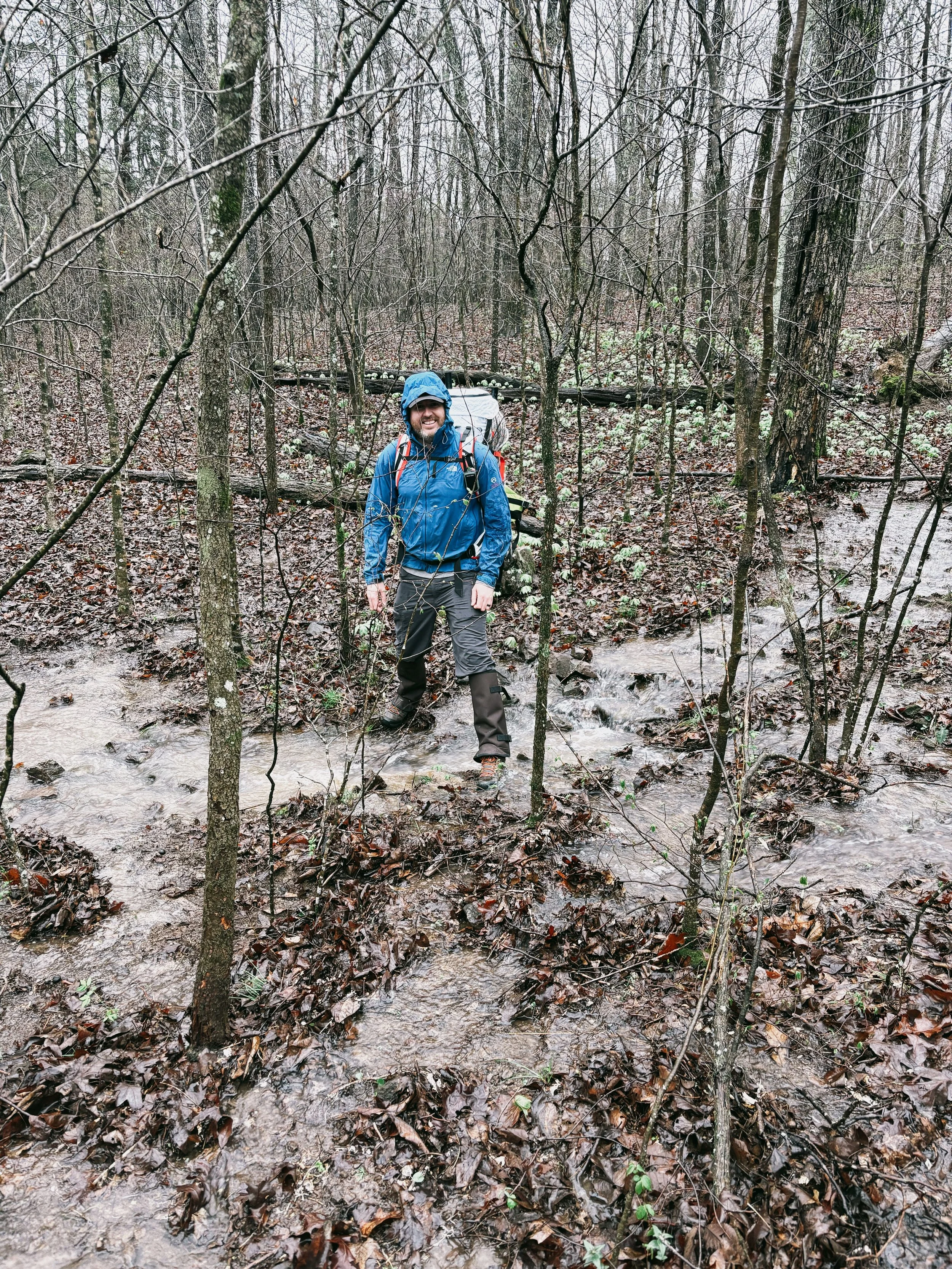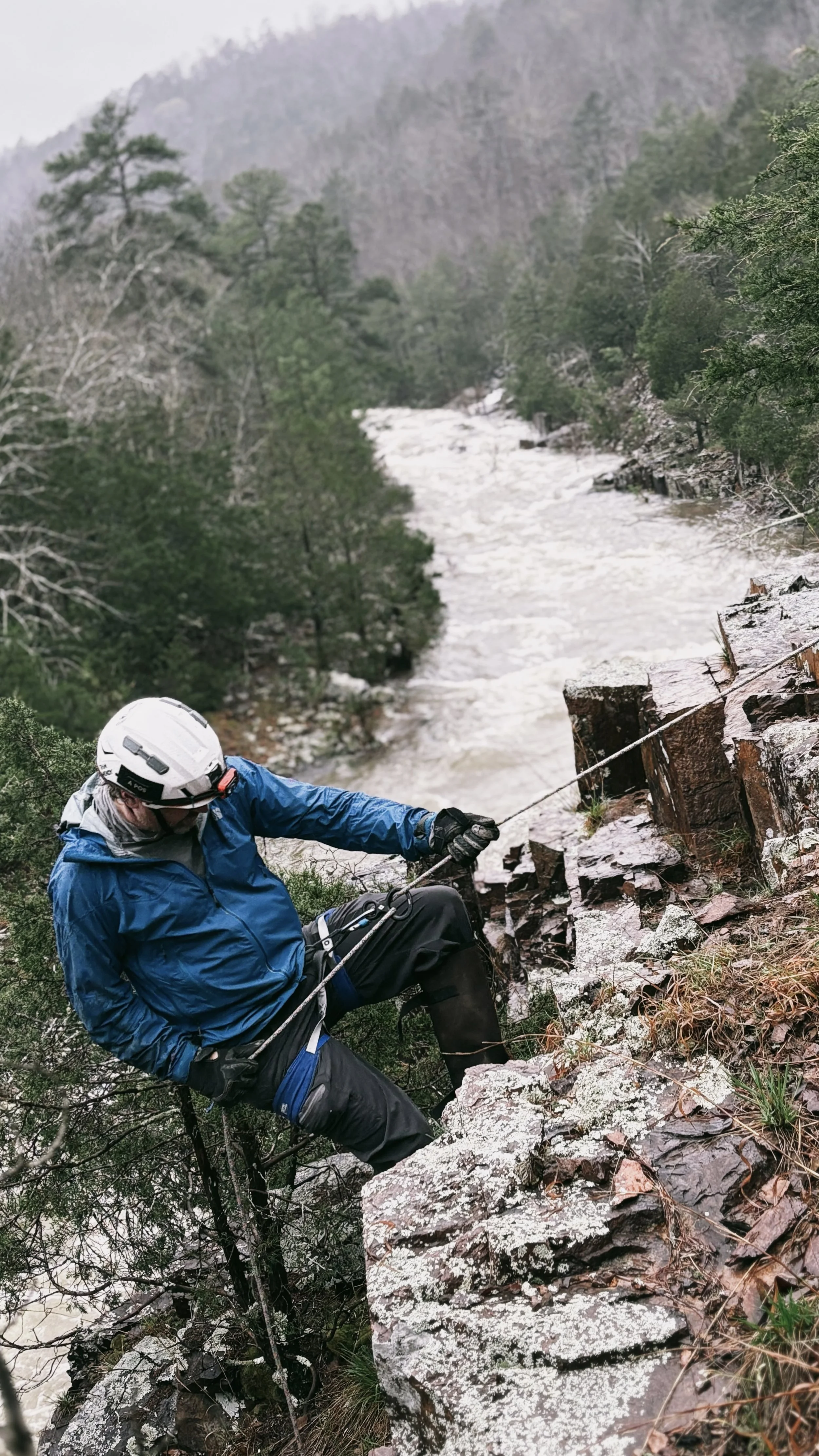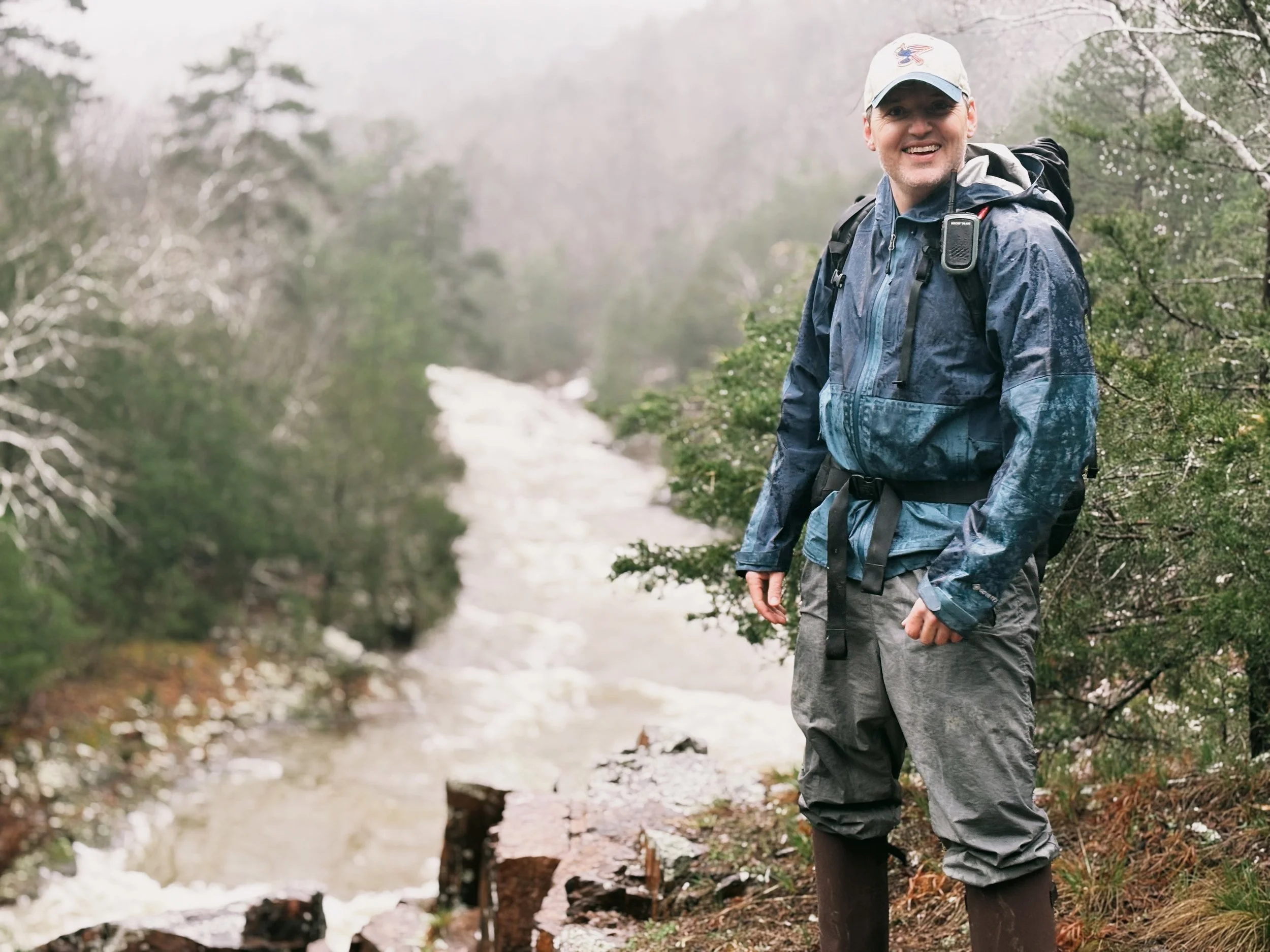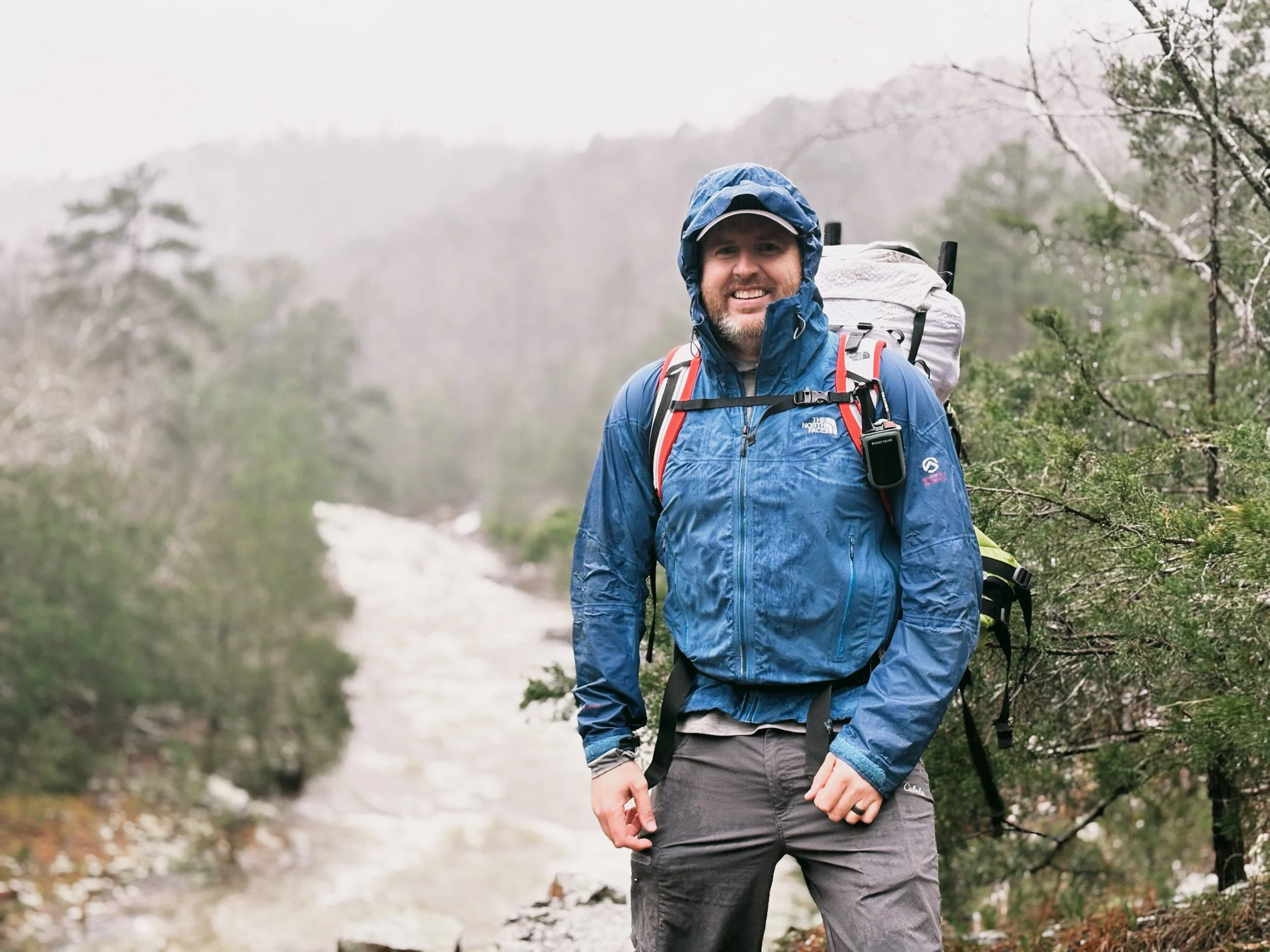
Lower Rock Creek
“In the ever-shifting rhythm of a packrafting trip, where water levels rise and fall with each storm and the terrain morphs around every bend, the strength of a group lies in shared responsibility and clear intention.”
A write up by Alex T.
This Class IV creek features a total gradient of 320 feet over 2.5 miles, with a notably steep one-mile segment that accounts for 200 feet of elevation loss. Downed wood is a persistent and significant hazard throughout much of the creek, often obstructing channels.
Tucked within the rugged hills of Missouri’s Mark Twain National Forest, Lower Rock Creek is a hidden gem that embodies the raw beauty of the Ozarks. This remote, granite-lined stream cuts through a steep-walled canyon, offering a landscape that feels far removed from the well-trodden paths of the Midwest. The creek tumbles over ancient rock shut-ins, creating a series of pools and riffles that echo with the sound of moving water and wind through the pines. It's a place where time slows down—where moss carpets boulders, water cascades in rhythmic falls, and the only trail markers are the tracks of deer, skinks and snakes that make home within the creek beds and southern facing glades, and the occasional shadow of a soaring hawk. For those willing to go a step farther, Lower Rock Creek rewards with solitude, untamed beauty, and the kind of wild experience that reminds you what it means to truly explore.

Adam and I setout on the backside of a historic rainfall with more storms forecasted for the day. On the drive down from St. Louis, as we rounded a bend on a narrow Missouri state road, we suddenly gave way to a dead stop—the road ahead was completely blocked by water over it with a massive oak, snapped and laid flat across both lanes like a drawn curtain another 100 yards ahead. The aftermath of the recent storms had left its mark here, and I stepped out into the humid, rain-soaked air to assess the situation. Just beyond the downed tree, a pair of headlights flicked on through the branches. A lifted Jeep sat idling, its grille just visible through the leafy tangle. As I approached my way towards it—stepping around the tree towards me with a grin and a wave, was Melissa F. We’d met more than once at river cleanups and trail rehab days, the kind of person you trust to show up when the work’s hard and the weather’s worse. Go figure I would be in the middle of nowhere though and run into her. With a little help via chainsaw, she was able to get thru by a newly cleared path on the road. Trading storm stories and laughing at the odds of meeting like this, a couple of backcountry wanderers halted by the same stubborn tree.
After getting up the road to our turnout, Adam and I were faced with our second challenge of the day. The road we needed to access to get to the known trailhead was washed out as the low water crossing was impassable. Looking at the map, we saw where we could access the trail via public lands in Mark Twain National Forest and quickly made an alternate starting point to our route, leaving the truck at a pullout along the gravel road. The first steps into Mark Twain National Forest were cushioned by the soft earth beneath our boots, a welcome contrast to the relentless downpour of the past 24 hours. Our goal? To find our way into Lower Rock Creek, a canyon slot tucked deep within the Missouri wilderness—a place few venture to when the weather isn't a challenge of its own.
The woods quickly became littered with debris from the derecho storm that blew thru in the past—trees uprooted and scattered like broken matchsticks. In fact, the storm was so strong at the time it created a new classification, the term ‘super derecho’. We had come to expect it from other adventures over the years. The remnants of that violent storm were still visible, making the beginning of our journey more about overcoming than simply walking.
Our path soon led us deeper into the forest, with every turn revealing more evidence of nature’s wrath. Fallen trees, so massive and heavy that no chainsaw could clear them easily, forced us off trail time and again. Each detour added to the challenge, but it was the aftermath of the storm’s rainfall that truly made this hike memorable. The water—rushing, gurgling, and roaring—was the wild card. The storms of the past day had turned the ravines into creeks, pushing its way through the forest as if eager to escape its confines.

As we climbed higher to avoid the wet ravines and downed trees, we realized that this route would lead us into the open glades of the mountain’s ridge—a longer journey than we had originally planned. The trade-off, however, was worth it. While the trail up high was exposed to the storm, it also offered a direct route into the canyon slot. On this glade the wind was fierce, persistently—whipping around us, carrying with it the sting of pelting rain. We pressed on, taking each step with a sense of determination. The sun was swallowed by the heavy clouds above, and by the time we reached the mountain's edge, we were already drenched. Dead reckoning became our best ally—there was no clear trail here, just a rough map, the steep terrain, and our experience navigating the wild. The faint roar of water guided us closer.
And then, the roar grew louder. The sound of rushing water was deafening as we neared Lower Rock Creek. It was a primal, overpowering force that demanded our attention.
We could see the entrance to the canyon slot ahead—narrow, jagged, and almost hidden. It was a place of raw beauty, but today it felt like nature was showing us her teeth. The water was running high, cascading down the steep walls of the slot, white froth swirling in its wake. For a moment, we marveled at the sight—an untamed force of nature that most people would never understand. There was no doubt: this place was wild.
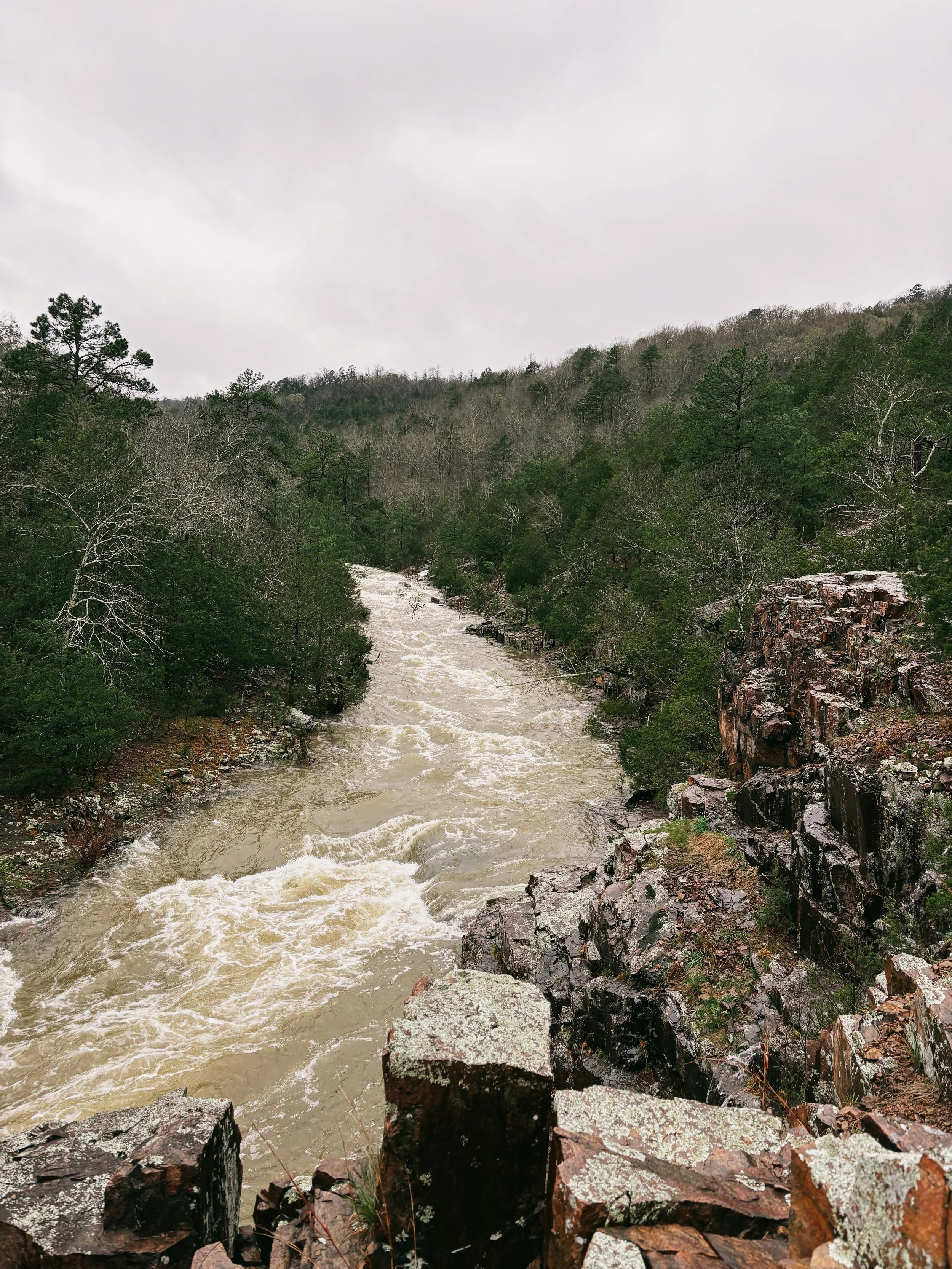
We had come to scout the slot for a packrafting descent. The thought of floating through the narrow, turbulent waters was exciting—perhaps too exciting. We rappelled into the canyon, feeling the weight of the rushing water as it pounded the rock walls around us. The sight was awe-inspiring, but the reality of the situation set in quickly.
While the water was definitely runnable in a packraft, the risk was more than we could manage. A mistake in these conditions could quickly lead to disaster. A swim, or a missed eddy, would sweep us into the next section of constricting water—a stretch from which there would be no escape. Without more partners to set safety the stakes were just too high and the lesson was clear: this was not a run for today. We stood in silence for a moment, watching the water cascade around us. The sound was deafening, but there was something peaceful in it too, a reminder of how small we are in the grand sweep of the natural world. The water—uncontrollable and eternal—was both a challenge and a gift.
“the lesson was clear: this was not a run for today”
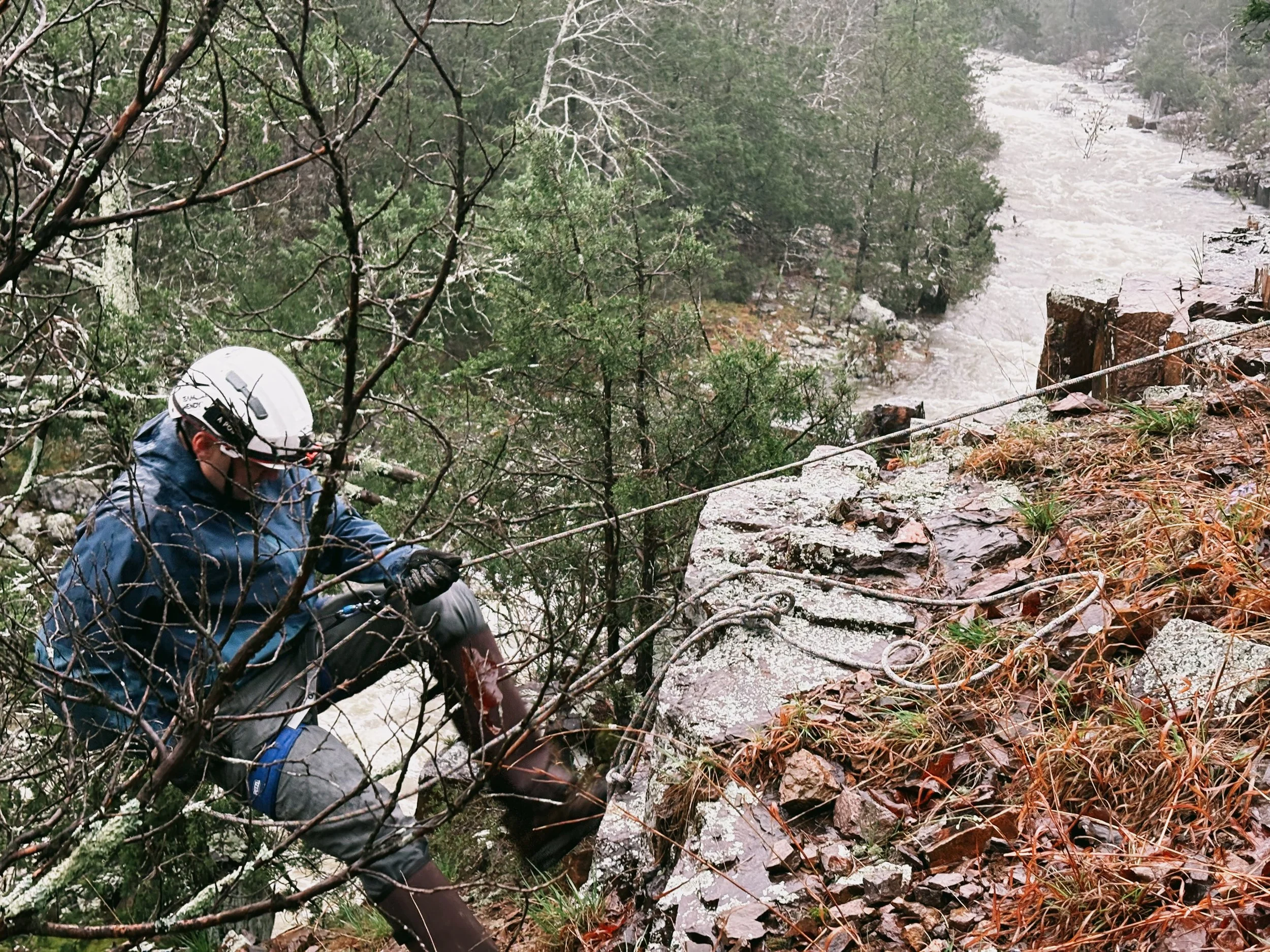
Reluctantly as it started to rain heavier again, we turned to hike out, following the lower trail that would lead us back to our starting point. As the day wore on and the light began to fade, the trails became more challenging. Every step felt a little heavier, every creek crossing a little trickier as the water continued to rise. Our headlamps flickered to life as the evening darkened, the air thick with humidity and the promise of even more rain. It took longer than expected to find a safe crossing point through the now-saturated dry creek bed. The water was high, the rocks slippery, and the ground slick with mud, but after some careful maneuvering, we found a path that took us back toward our truck.
When we finally arrived at the vehicle, the sky was completely dark, and the rain still fell in soft sheets. We were exhausted, soaked to the bone, and yet filled with a quiet, unshakeable joy. There is something about the wilderness—the raw, untamed power of it—that humbles you. And even though we had turned back from a potential packraft descent, the experience was not a failure. It was a reminder that some adventures are about knowing when to push forward and when to step back.
“There is something about the wilderness—the raw, untamed power of it—that humbles you”
In the ever-shifting rhythm of a packrafting trip, where water levels rise and fall with each storm and the terrain morphs around every bend, the strength of a group lies in shared responsibility and clear intention. On this trip, we made it a point to ensure that we felt empowered to take action—whether that meant calling out a potential hazard, initiating a gear check, or rerouting when conditions changed. That culture of shared ownership doesn’t just build efficiency; it builds trust. But even more important is keeping the heart of the trip in focus. When the goal is recreation, we remind ourselves that safety and the well-being come before any environmental objective or personal benchmark. We bake this mindset into our rhythm—using control points at rest stops to recalibrate: water levels in bottles, a quick weather update, checking for cold fingers or fatigue, scanning the terrain ahead. These moments of intentional pause are what allow us to stay present in dynamic environments, where situational awareness is not just a skill—it’s a necessity.
